December JOLTS Report Shows Renewed Stalled Jobs Market Due To Out Of Control Pandemic
This morning’s JOLTS report for December confirmed a jobs market recovery that has paused due to the increasing effects of the out of control pandemic. Most importantly, hires declined sharply - down by over 5% in a single month!
While the JOLTS data is a deep dive into the dynamics of the labor market, since it only dates from 2001, there are only 2 previous recoveries with which to compare the present. Nevertheless, it is worthwhile to make the comparison
In the two past recoveries:
- first, layoffs declined
- second, hiring rose
- third, job openings rose and voluntary quits increased, close to simultaneously
Let’s examine each of those in turn. In each case.
What appears below is that, although there has been some variation, the year 2020 through December has recapitulated the pattern from the last two early recoveries: the first two data series to turn - layoffs and hires - have indeed turned, while the last two - job openings and voluntary quits - have appeared to bottom but have had a much less dramatic rise. With increased pandemic restrictions and consumer caution, several renewed negative readings in November, but not enough to significantly change the trend.
This first graph compares layoffs and discharges (blue) with the 4 week average of initial jobless claims (red) prior to this recession, for reasons of scale since March and April would be “off the charts”:
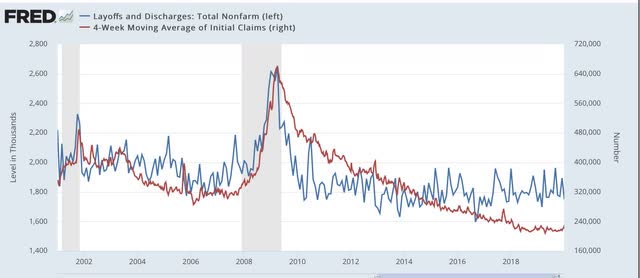
You can see that, by the end of the recessions, layoffs were already declining, and continued to decline steeply over the next 3-8 months before reaching a “normal” expansion level. The turning point coincides exactly with the much less volatile, but more slowly declining, level of initial jobless claims.
The same had been the case this year up through October. Layoffs and discharges already declined to their “normal” level in May, while initial jobless claims peaked one to two months later, and continued to decline (slowly) into autumn. Then, in November, layoffs and discharges increased and remained elevated in December. Initial claims followed suit with a one month delay:
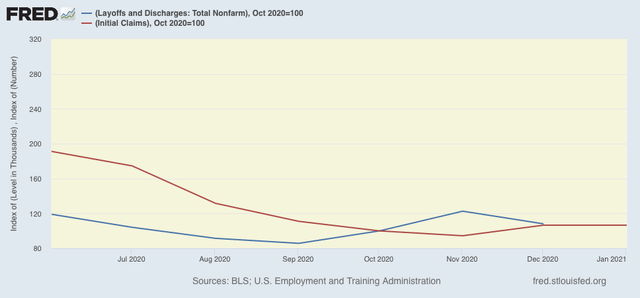
Next, here is the entire historical relationship between hires (red) and job openings (blue) through 2020:
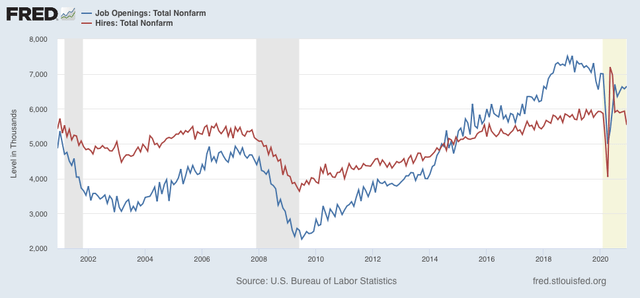
In the past two recoveries, actual hires started to increase one to two months before job openings.
Both made troughs in April but hires initially rebounded more sharply ever since May compared with job openings. Since July openings have stagnated, while hires actually declined significantly in December to their worst level since the April lockdowns:
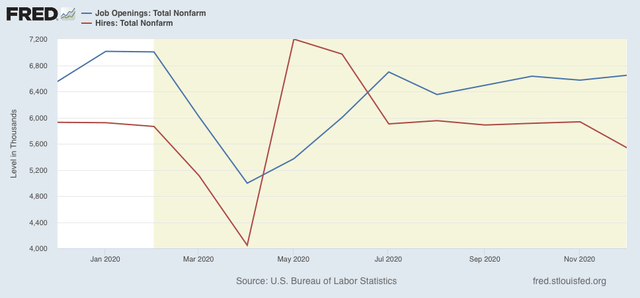
Next, here are quits (green) vs. job openings (blue):
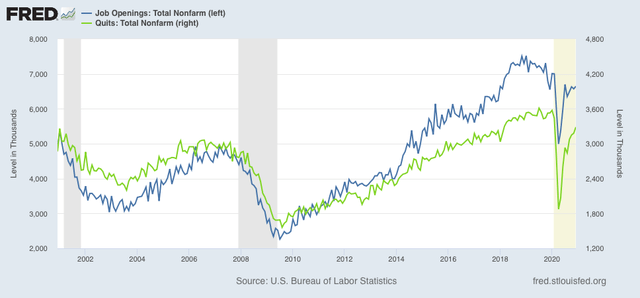
In the past two recoveries, openings rose first, followed by quits, suggesting it is openings that leads to the increase in voluntary quits. That has been the case in 2020 as well
Because of the enormous moves during this pandemic year, seasonal adjustments might not be leaving us with a true picture, so here are job openings (blue), hires (red), and voluntary quits (green), measured YoY instead, for the entirety of the series up through the present:
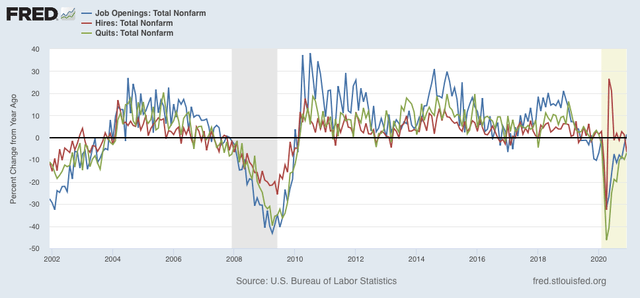
We can see that hires rebounded first following the 2001 and 2008-09 recessions. Quits and openings moved generally in tandem with a slight lag. The same pattern generally appeared in 2020, with quits perhaps slightly lagging.
Finally, I have broken out layoffs and discharges separately below, because the their level in April and May of this year would obliterate all other variations. The first graph covers their entire history through 2019, and the second 2020 beginning in June:
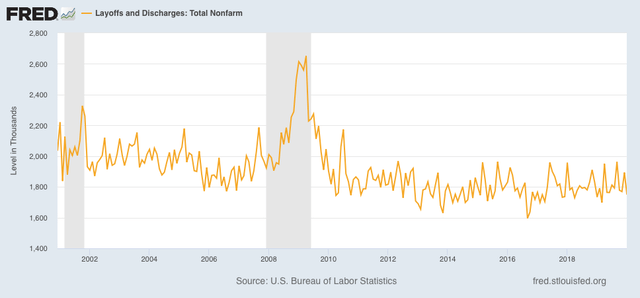
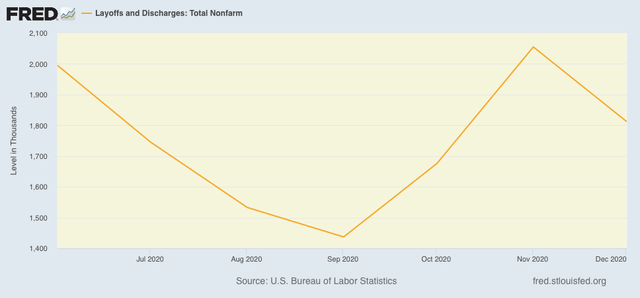
This metric returned to normal almost immediately after both of the past two recessions, and did so again by June of last year, and has stayed in that normal range ever since, although layoffs and discharges have clearly increased since September.
To sum up, the December JOLTS report once again shows:
1. A pattern generally consistent with the past 2 recoveries, with layoffs having returned to normal levels, then hiring having increased and finally quits and openings increasing as well;
2. The late autumn and early winter surge in the out of control pandemic has shown up in increasing layoffs and separations, and a downturn in hiring.
With new infections having sharply declined in the past 4 weeks, and 40+ million doses of vaccine administered, I am expecting a positive reversal, but not until at minimum the JOLTS report covering this month, which will be released in April.
Disclaimer: This blog contains opinions and observations. It is not professional advice in any way, shape or form and should not be construed that way. In other words, buyer beware.



